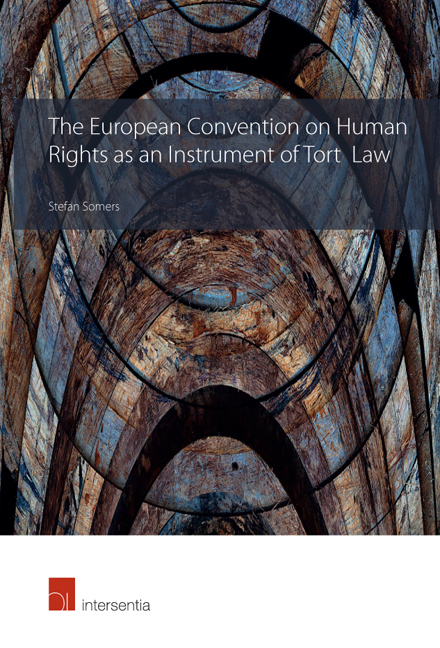Book contents
- Frontmatter
- Dedication
- Contents
- List of Cases
- Introduction
- Chapter 1 Human Rights in Horizontal Relations
- Chapter 2 Articles 13 and 41 ECHR and State Liability
- Chapter 3 The Interaction between Articles 13 and 41 ECHR and Liability in Horizontal Relations
- Chapter 4 Tort Liability as a Violation of Human Rights
- Chapter 5 Article 41 as an Alternative Tort Law System
- Chapter 6 General Outline of Article 41 of the Convention
- Chapter 7 Damages
- Chapter 8 Fault and Blameworthiness
- Chapter 9 Causality
- Chapter 10 Restitution
- Conclusion
- Bibliography
- About the Author
- Frontmatter
- Dedication
- Contents
- List of Cases
- Introduction
- Chapter 1 Human Rights in Horizontal Relations
- Chapter 2 Articles 13 and 41 ECHR and State Liability
- Chapter 3 The Interaction between Articles 13 and 41 ECHR and Liability in Horizontal Relations
- Chapter 4 Tort Liability as a Violation of Human Rights
- Chapter 5 Article 41 as an Alternative Tort Law System
- Chapter 6 General Outline of Article 41 of the Convention
- Chapter 7 Damages
- Chapter 8 Fault and Blameworthiness
- Chapter 9 Causality
- Chapter 10 Restitution
- Conclusion
- Bibliography
- About the Author
Summary
In 2011, Elisabeth Lambert Abdelgawad wrote that Art. 41 of the ECHR had not yet gained much attention in legal scholarship. At that time, the topic had been touched upon in several articles and had been the main topic of the PhD of Michiel Van Emmerik. But the topic had not yet been the subject of a vividly academic debate. Publications regarding tort law and human rights stood as lone rocks in the vibrant sea of human rights doctrine. When I began to do research on the relationship between human rights and Belgian tort law in 2011, I had the impression that I was digging into a topic that fell between the field of interest of human rights scholars and tort lawyers. It seemed as if none of them were really interested in the topic. Human rights scholars seldom paid much attention to topics like damages and compensation. They were more interested in substantial topics, the major societal issues that come to the surface when human rights are at stake. Tort lawyers on the other hand, are often unaware of the possible influence of the European Convention on Human Rights. Since one of the main purposes of tort law is the reparation of damages, it seemed likely that scholars in tort law would be interested in the jurisprudence of the ECtHR on restitution. But this did not seem to be true. At least in Belgium, it looked as if tort lawyers were almost unaware of the fact that the ECtHR has the ability to award damages, let alone that this ability can potentially influence national tort law.
This disregard of tort law and human rights for one another is reasonable if one takes into account that for a long time both fields of law were perceived as part of two different spheres of the law. Human rights are traditionally part of public law, that is the law that regulates the vertical relations between the state and private persons. Tort law is a part of private law, that is the law that applies in the horizontal relations between private persons inter se. Both spheres of the law were perceived as different in nature. This is mainly so because of the monopoly over violence of the state. This monopoly enables the state to exercise coercion on its citizens, whereas it disables citizens from using coercion towards one another.
- Type
- Chapter
- Information
- Publisher: IntersentiaPrint publication year: 2018



